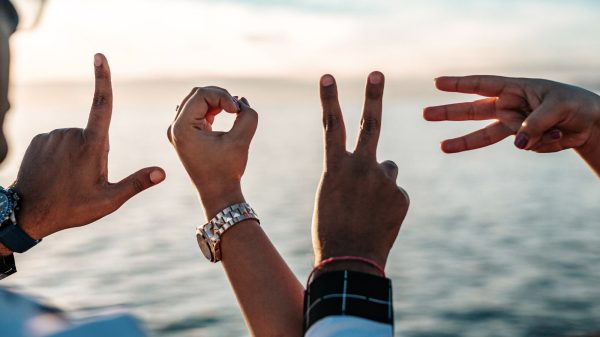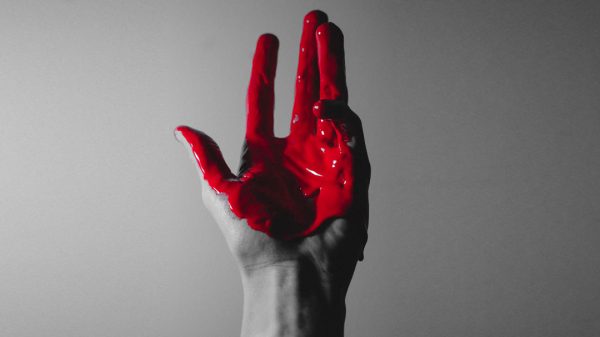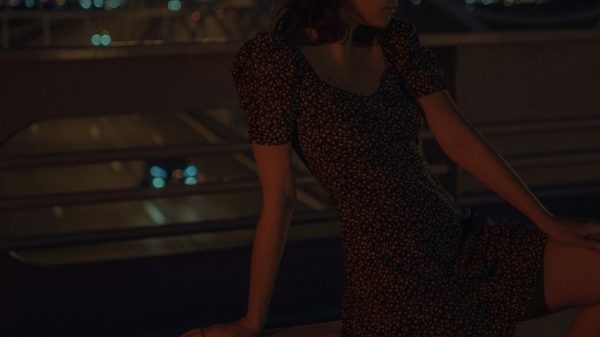I was on the way to the wet market of Bankerohan, when – at an intersection – two men in a tricycle (delivering some goods from the palengke) yelled “Bayot! Bayot!” to two transgender women seated on rough cement on the sidewalk. The two LGBTQIA persons quickly gave the perhaps-heterosexual-identifying men a look, and then basically ignored them to continue massaging their feet after removing their heels. More yelling of “Bayot!” happened… and then that tricycle was gone from sight. The two who were mocked didn’t seem to give the heckling any mind; they weren’t fazed or whatever, and just went on with what they were doing.
I was more flabbergasted, truth be told. I felt for the two members of the LGBTQIA community. I used to be repeatedly mocked, too, even while just simply walking on streets. I still get taunted at times, in fact…
But I was taken by surprise, too, when it happened. Mainly because Davao City already has an anti-discrimination ordinance (this has been repeatedly used to portray the Dutertes as more pro-LGBTQIA than their political opponents). Specifically, Executive Ordinance No. 0417-2012 (or the Anti-Discrimination Ordinance of Davao City) was passed in 2012, declaring as unlawful acts and conduct of discrimination based on sex, gender identity, sexual orientation, race, color, descent, national or ethnic origin, and religious affiliation or belief. This was eventually amended in 2018.
Here’s the thing: This ordinance continues to be teeth-less since there’s still no IRR (implementing rules and regulations).
Now and then you’d encounter news about pro-LGBTQIA efforts in Davao, like the conversion of G/F restrooms of the Sangguniang Panlungsod building in 2018. The move is supposed to stress that the city is all-welcoming.
But I’d argue that Davao City’s ADO is exemplifying the ongoing failed attempt at real LGBTQIA inclusion. And this is due to various reasons. Let’s go through some…
1. I seriously doubt THAT MANY LGBTQIA people in Davao City know of this ADO’s existence.
Those two transgender women who were yelled at definitely didn’t. Or at least I assume. Else, they’d know there’s a legal policy that protects them from that very occurrence; and no one can/is allowed to do that to them sans sanctions/punishment. So they could have had those guys arrested… theoretically, at least. Unless they were okay with being abused, which makes it a different story altogether…
2. The absence of the IRR 11 years after the ordinance was passed shows everyone that this wasn’t and still isn’t a priority effort of the local government.
Duterte the father signed this, and Davao already had his daughter and son replace him. And yet still no IRR has been made. Which makes you question where – in the priorities of politicians – protecting LGBTQIA human rights lies. Though yeah… apparently not high enough in the list of ASAP/must do immediately.
3. The groundswell doesn’t seem to exist for this ordinance to exist.
Yes this is needed; what happened to those two transgender women in Bankerohan highlight why this is needed. But that there’s no strong call for the IRR to be be rushed perhaps shows that local LGBTQIA people’s priorities may be elsewhere… say, making a living (check the area around Bangko Sentral ng Pilipinas/BSP to see the growing number of transgender sex workers walking the streets with those who were assigned female at birth, all of them derisively called “buring” or “prostitutes”).
This lack of grassroots call for a law to protect them is actually also apparent with the SOGIESC Equality Bill, also much-needed and yet seemingly “guarded” (gate keeping much, yes) by select organizations and their people who are mainly based in Metro Manila; ask LGBTQIA Filipinos from far-flung areas and they honestly don’t know anything about it (or even about SOGIESC, or being LGBTQIA). A disconnect is there, with those just-as-affected not getting the most from supposed-to-be-beneficial efforts because: a) they may not have been tapped in the development and eventual implementation of the same; b) they do not know the existence of these policies supposed to benefit them; and c) the “leaders” did not explain to them what good these policies will do to them.
4. Laws can only do so much; we also need cultural change.
There are already laws protecting women… and these are national in scope (e.g. (Republic Act 9710 or the Magna Carta of Women), and yet women in Davao City are not spared from discriminatory practices. That dismissive referring to female sex workers as “buring” by the taxi drivers who drove us past BSP provides a glimpse at how women may still be looked down on… Because having a law does not automatically change patriarchal beliefs often excused as “part of our culture”.
This is the same with pro-LGBTQIA policies. These should not solely exist; instead, these should trigger changes in practices to make them more respectful of LGBTQIA people. This is the end-goal: for cultures to start embracing us. So we don’t hear those “Bayot!” taunting again…
Here’s the thing: Laws are only as good as their application. In the case of Davao City’s ADO, well… we ask: What ADO? If people can just mock LGBTQIA people on streets, in front of everyone, with the abusers not caring about the repercussions, then one is bound to wonder if such an ordinance exists at all. And since we even have to ask about its existence, then yeah, this one has become a there-but-not-there policy…
The founder of Outrage Magazine, Michael David dela Cruz Tan completed BA Communication Studies from University of Newcastle in NSW, Australia; and Master of Development Communication from the University of the Philippines-Open University. He grew up in Mindanao (particularly Kidapawan and Cotabato City), but he "really came out in Sydney" so that "I sort of know what it's like to be gay in a developing, and a developed world". Conversant in Filipino Sign Language, Mick can: photograph, do artworks with mixed media, write (DUH!), shoot flicks, community organize, facilitate, lecture, and research (with pioneering studies under his belt). He authored "Being LGBT in Asia: Philippines Country Report", and "Red Lives" that creatively retells stories from the local HIV community. Among others, Mick received the Catholic Mass Media Awards in 2006 for Best Investigative Journalism, and Art that Matters - Literature from Amnesty Int'l Philippines in 2020. Cross his path is the dare (guarantee: It won't be boring).

































































